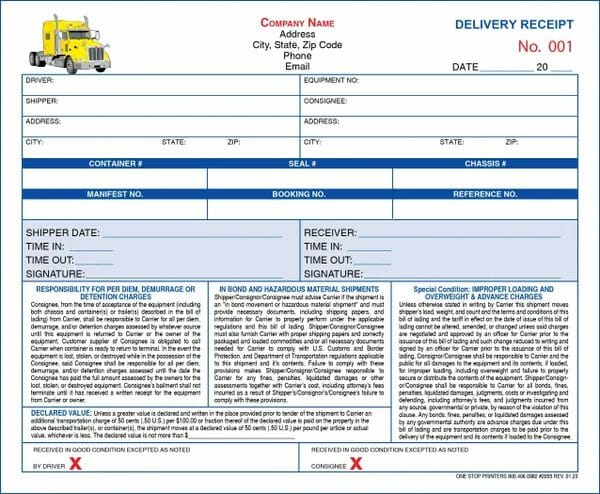
Table of Contents
What is Proof of Delivery in Trucking
Proof of Delivery is a document that confirms a shipment has been delivered to the recipient’s or shipper’s address as specified in the shipping contract.
The POD typically includes details such as the date and time of delivery, the recipient’s name and signature, and a description of the goods delivered. It acts as a legal record of the transaction and serves to protect all parties involved in the shipment process.
What Information is on a Proof of Delivery Document
A typical POD document contains the following information:
Shipper’s Information: This includes the name and address of the shipper or the company that is sending the goods.
Consignee’s Information: Details about the recipient of the shipment, including their name and address.
Delivery Details: Information about the date and time of the delivery, along with a description of the goods delivered.
Recipient’s Signature: The recipient’s signature is essential as it serves as confirmation that they have received the goods in question. In some cases, the recipient may also be asked to print their name.
Driver’s Information: Details of the driver who made the delivery, often including their name and signature.
Purpose of Proof of Delivery
Proof of Delivery serves several important functions in the trucking industry:
Confirmation of Delivery: The POD provides confirmation that the goods have been delivered to the correct recipient at the specified address.
Legal Protection: In case of disputes about deliveries, the POD serves as a legal record of the transaction, protecting all parties involved.
Billing and Payment: PODs are often used to confirm that a delivery has been made before payment is released. In this context, they can facilitate the billing process and ensure that carriers are paid promptly.
Inventory Management: By providing details of goods delivered, PODs can aid in inventory management and record keeping for both shippers and receivers.
How to File Proof of Delivery
Preparation: Before or during transit, the delivery personnel prepare the POD document, which includes details of the shipment like the sender, recipient, description of goods, and quantity.
Delivery: Upon arrival at the delivery location, the driver presents the cargo for unloading.
Inspection: The recipient inspects the goods to ensure they match the shipment details and are in acceptable condition. This may involve checking quantities, types of goods, and looking for any damage.
Signing: Once the recipient verifies the goods, they sign the POD document. This signature serves as official confirmation that the shipment was received in the stated condition. The driver may also sign, acknowledging the delivery completion.
Return: The signed POD is then returned to the driver, who brings it back to the trucking company or sends it electronically. This document serves as evidence that the delivery was made and accepted, completing the transaction.
Processing: The trucking company processes the signed POD for billing and record-keeping. It proves the successful delivery for invoicing the sender or fulfilling contract terms.
Proof of Delivery is a fundamental document in the trucking industry, playing a key role in confirming deliveries, protecting stakeholders, facilitating payments, and aiding inventory management. Proper management of PODs is essential for smooth operations and effective dispute resolution in the logistics sector.
Listen to The Article Here
POD Example Document


